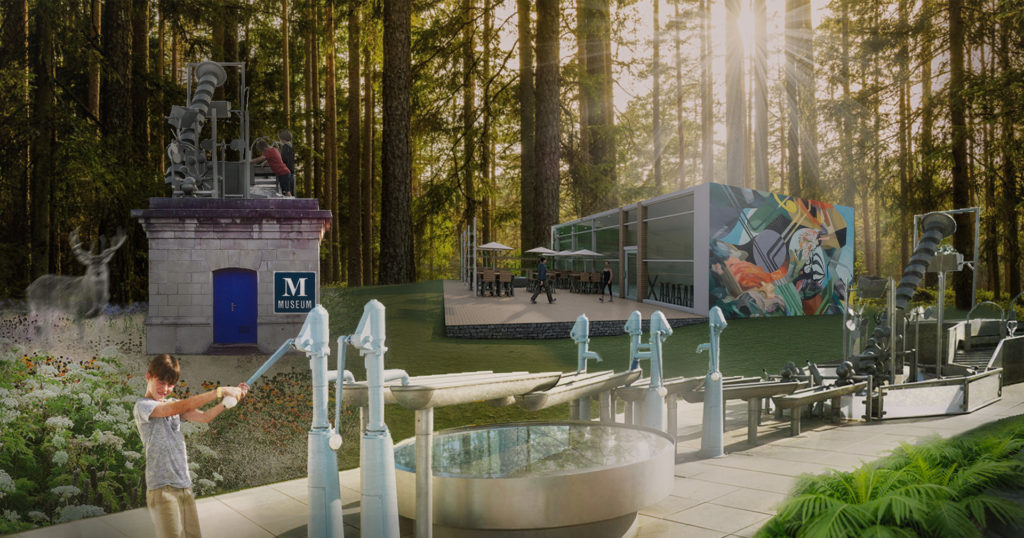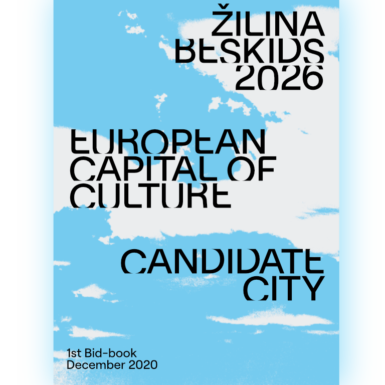At the beginning of February, in the competition of 8 candidate cities from Slovakia, Žilina successfully advanced to the 2nd round, together with the cities of Nitra and Trenčín. We bring you more details from the content of our bid book, the 60-page application that moved Žilina to the finals of the competition for the European Capital of Culture 2026.
The ambition to become the European Capital of Culture represents a certain culmination of the long-term efforts of local civil society and public institutions that inspire the cultivation of European and democratic values. These efforts date back to the 1990s when the city underwent a difficult economic and political transition, a crisis of local democracy and a stage of extremism, and culture proved to be one of the drivers of positive change.
However, obtaining the title does not only mean presenting art at the year-round festival in 2026, it is about the overall transformation of the city, redefining its profile and establishing itself in the European context. The aim of the project is to move the city in the social, economic and urban areas. Simultaneously with the preparatory process of candidacy, the city of Žilina also started working on its new cultural strategy Creative Žilina 2035 aimed at creating conditions for a significant improvement of the cultural and creative ecosystem of the city.
The application presents the planned program for 2026 divided into three main lines called Flow of Nature, Future’s Factory and Borderless Identity. More than 130 cultural and artistic projects have been created, here we select one key theme or interesting project from each program line.
Žilina is surrounded by three rivers and two large water reservoirs, but water is almost not present in the city. Within the first program line FLOW OF NATURE, several projects or events are planned, which will make water more accessible to citizens, such as the Flow Festival combining cultural and sports experiences and bringing lighting and art installations to the banks of the Váh river, Floating Gardens project which will be a space for community activities and gardening in conjunction with art installations on the local water dam, as well as the Raj~čanka project with the objective to revitalize the water banks with cultural and community activities. The Bôrik Environmental Center will also be established in one of the oldest reservoirs in the city, exploring water in playful, interactive, immersive exhibitions.

Bôrik Environmental Center – first visualization
In the program line FUTURE’S FACTORY, one of the central themes is public space. The organization PASÁ: Ž – Platform for architecture and civic participation will be created, becoming a venue for exhibitions, creative workshops, lectures and educational programs on public space in the city. This will create a platform for dialogue on architecture and urbanism between professionals and city residents. The Creative Bureaucracy project, which seeks innovative ways to improve public services through creative methods and citizen involvement, will also be included.
In the last program line called BORDERLESS IDENTITY, the focus is on the stories that form the identity of the city, the region and its inhabitants. One of the key stories is the little-known story of Rudolf Vrba and Alfred Wetzler, two refugees from the Auschwitz-Birkenau concentration camp, who arrived in Žilina in 1944 and secretly wrote a document that acquainted the world with the mass murder in Nazi death camps. We want to turn the Vrba-Wetzler Trail into a year-round route with memorials, information boards and works of art dedicated to their story, which will explore issues of common identity as well as personal courage.
A key element of the whole project is the active involvement of a wide range of citizens. Thus, various projects are planned that will bring culture and art closer to the daily lives of local people, such as Community Art Centers in urban and suburban areas of the city, Children’s Cultural Center for families with children, an art project for the involvement of socially disadvantaged groups, or projects actively involving residents of remote regions in the creation of art. Citizen involvement is important already in the preparatory phase of the project, and therefore the project team is planning several participatory activities for 2021, such as visits to city districts and mapping of their cultural needs, events called Small Talks for project presentations to local communities or a project development program between three partner cities.
However, the European Capital of Culture also has an important European dimension – it provides a forum for discussing Europe’s most pressing social and environmental challenges. Most of the planned cultural and artistic projects will connect Žilina with interesting European partners and bring to the attention the most current topics such as the climate crisis, freedom of speech, the rise of nationalism, local democracy, sustainable working conditions in culture and support for creative industries.
The application also describes in detail the implementation plan for this comprehensive project – from the projected budget, the campaign to attract European visitors and the promotion of the Beskids as a tourism destination, through the proposed organizational structure of the future non-profit organization, to the list of major investments in the cultural infrastructure of the city and region which will target neglected or create new places for culture and art, for both their creators and users.
Read more details on all these areas in the bid book summary.

 22/03/2021
22/03/2021

